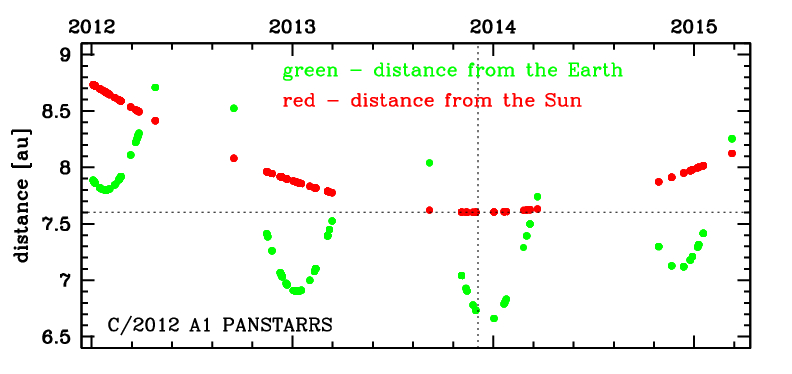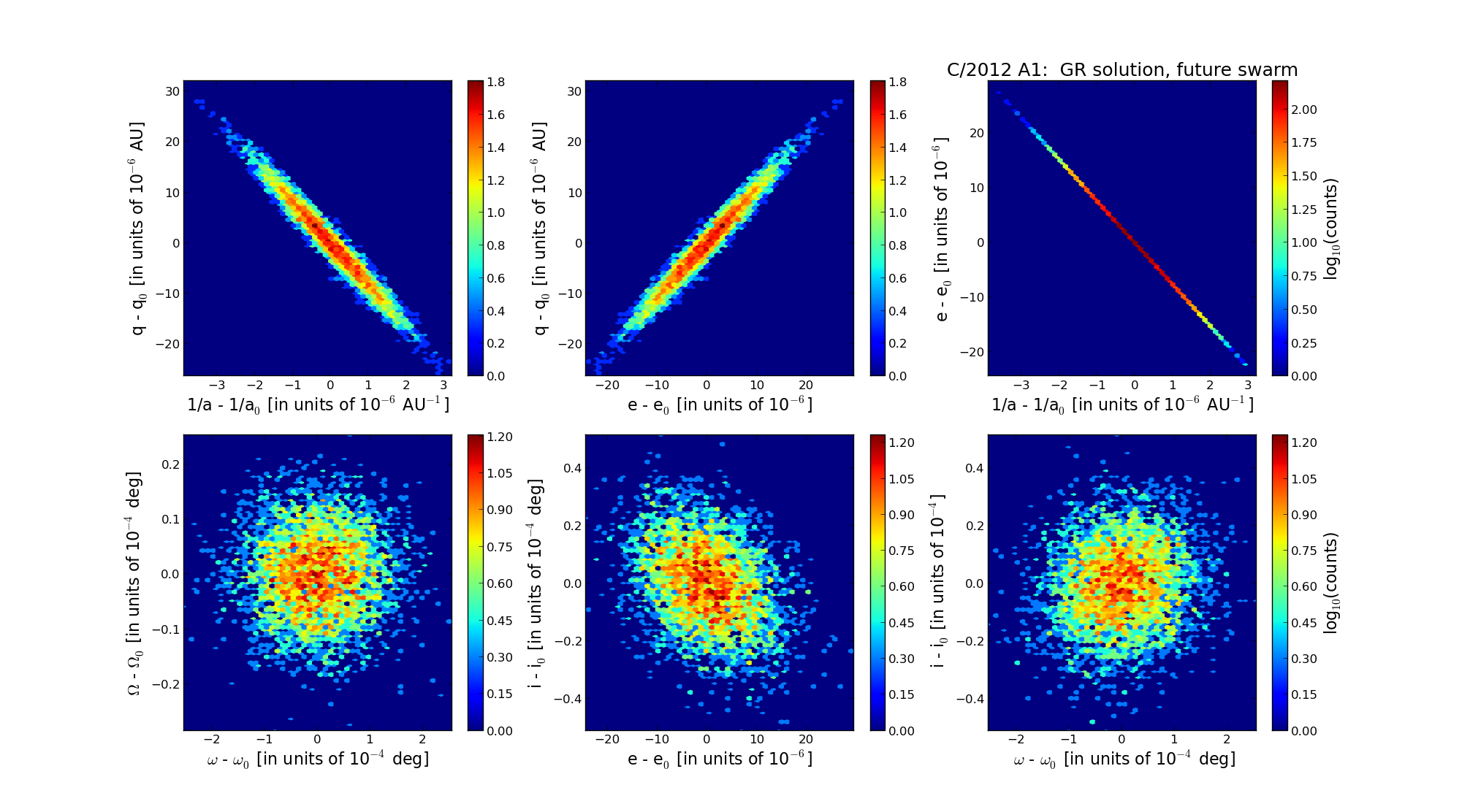C/2012 A1 PANSTARRS
more info
Comet C/2012 A1 was discovered on 2 January 2012, that is 1.9 yr before perihelion passage, and next observed 3.2 yr during four oppositions in a range of heliocentric distances: 8.73 au – 7.603 au (perihelion) – 8.12 au.
Comet had its closest approach to the Earth on 22 December 2013 (6.642 au, about three weeks after perihelion passage, see figure).
C/2012 A1 suffers a slight planetary perturbations during its passage through the planetary system.
See also Królikowska and Dybczyński 2017.
Comet had its closest approach to the Earth on 22 December 2013 (6.642 au, about three weeks after perihelion passage, see figure).
C/2012 A1 suffers a slight planetary perturbations during its passage through the planetary system.
See also Królikowska and Dybczyński 2017.
| solution description | ||
|---|---|---|
| number of observations | 330 | |
| data interval | 2012 01 02 – 2015 03 09 | |
| data type | perihelion within the observation arc (FULL) | |
| data arc selection | entire data set (STD) | |
| range of heliocentric distances | 8.73 au – 7.60 au (perihelion) – 8.12 au | |
| detectability of NG effects in the comet's motion | NG effects not determinable | |
| type of model of motion | GR - gravitational orbit | |
| data weighting | YES | |
| number of residuals | 653 | |
| RMS [arcseconds] | 0.40 | |
| orbit quality class | 1a+ | |
| orbital elements (barycentric ecliptic J2000) | ||
|---|---|---|
| Epoch | 2325 06 02 | |
| perihelion date | 2013 12 01.70771670 | ± 0.00116427 |
| perihelion distance [au] | 7.59862542 | ± 0.00000785 |
| eccentricity | 0.99879397 | ± 0.00000724 |
| argument of perihelion [°] | 191.892635 | ± 0.000071 |
| ascending node [°] | 277.978070 | ± 0.000007 |
| inclination [°] | 120.938298 | ± 0.000014 |
| reciprocal semi-major axis [10-6 au-1] | 158.72 | ± 0.95 |
| file containing 5001 VCs swarm |
|---|
| 2012a1a5.bpl |

